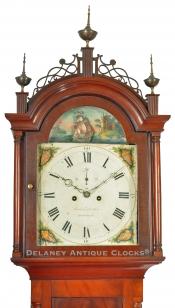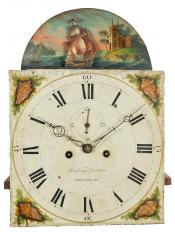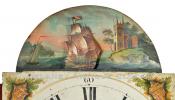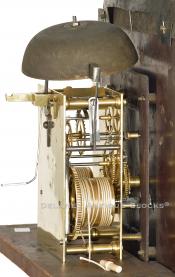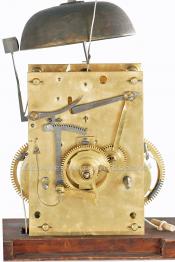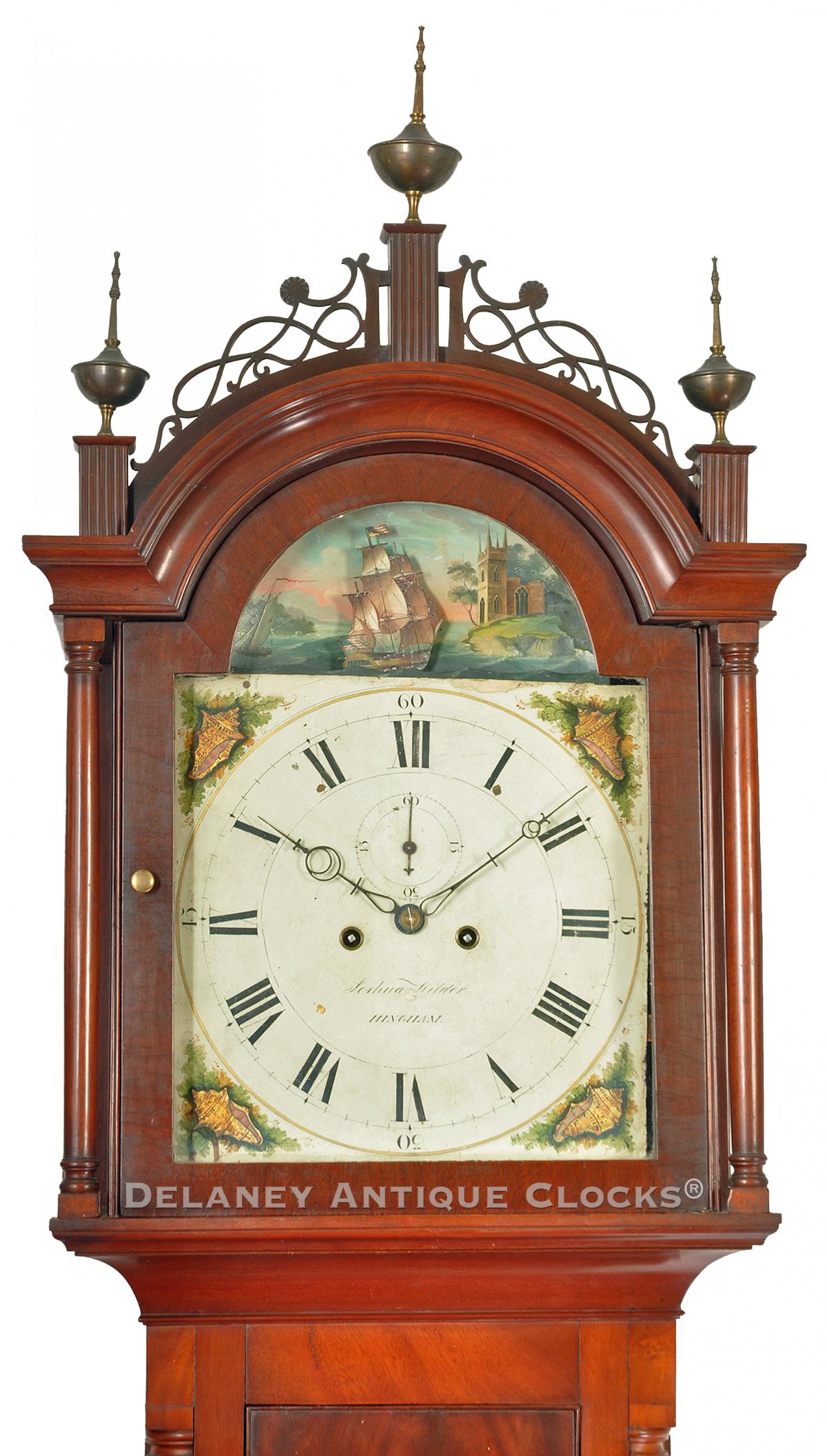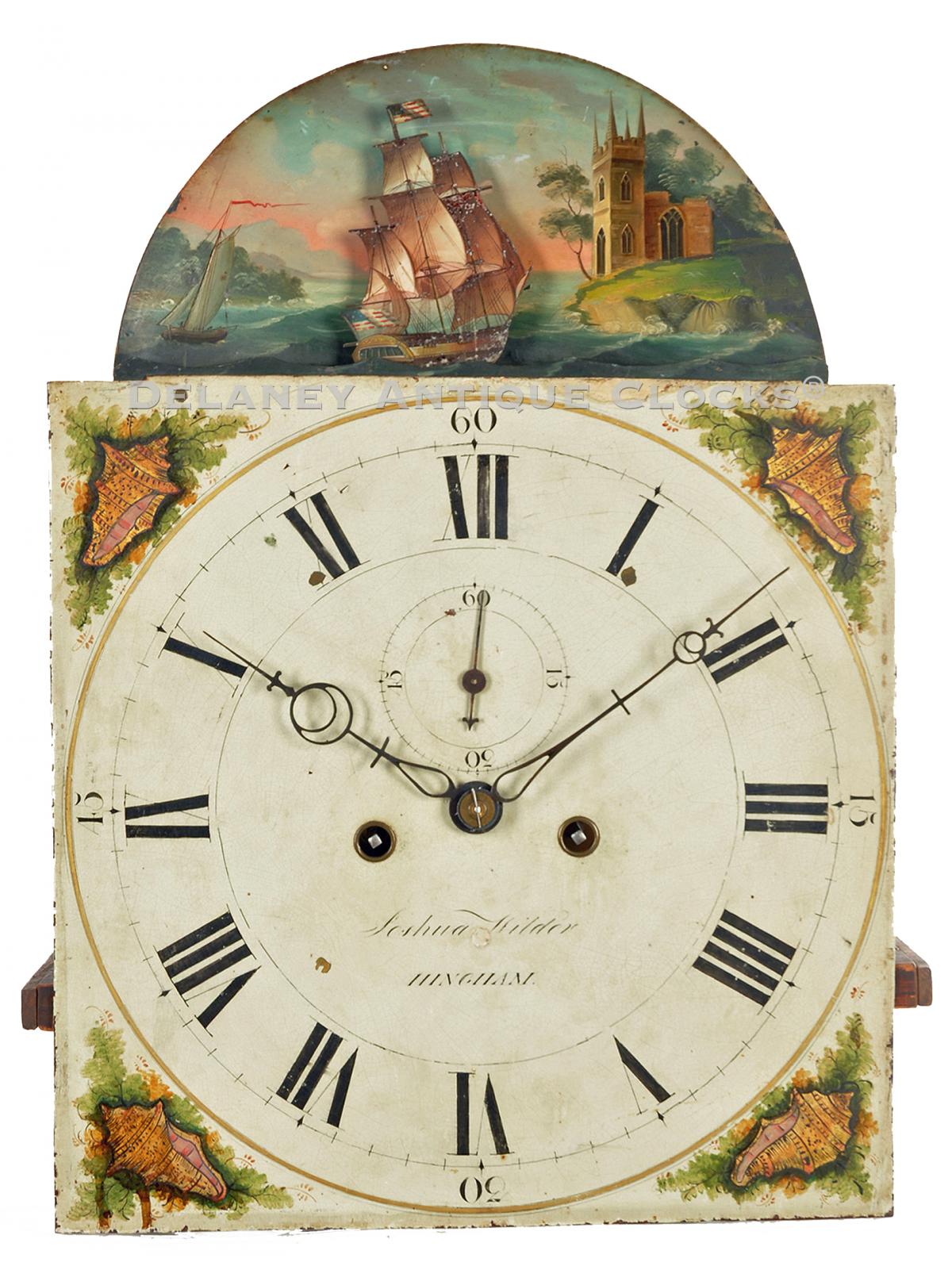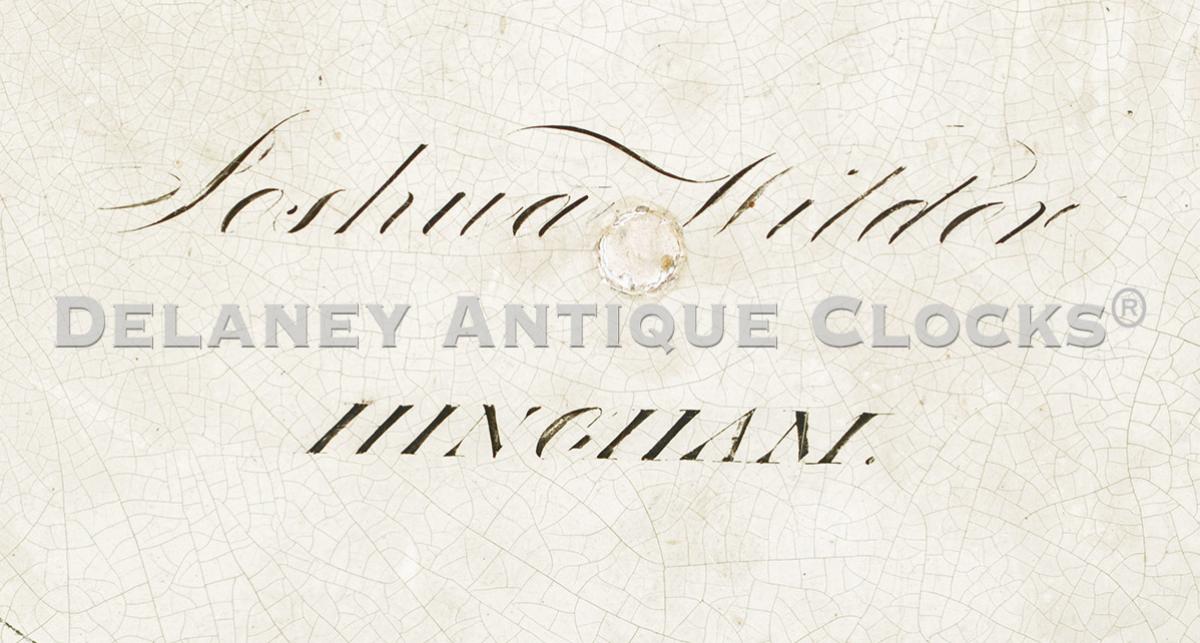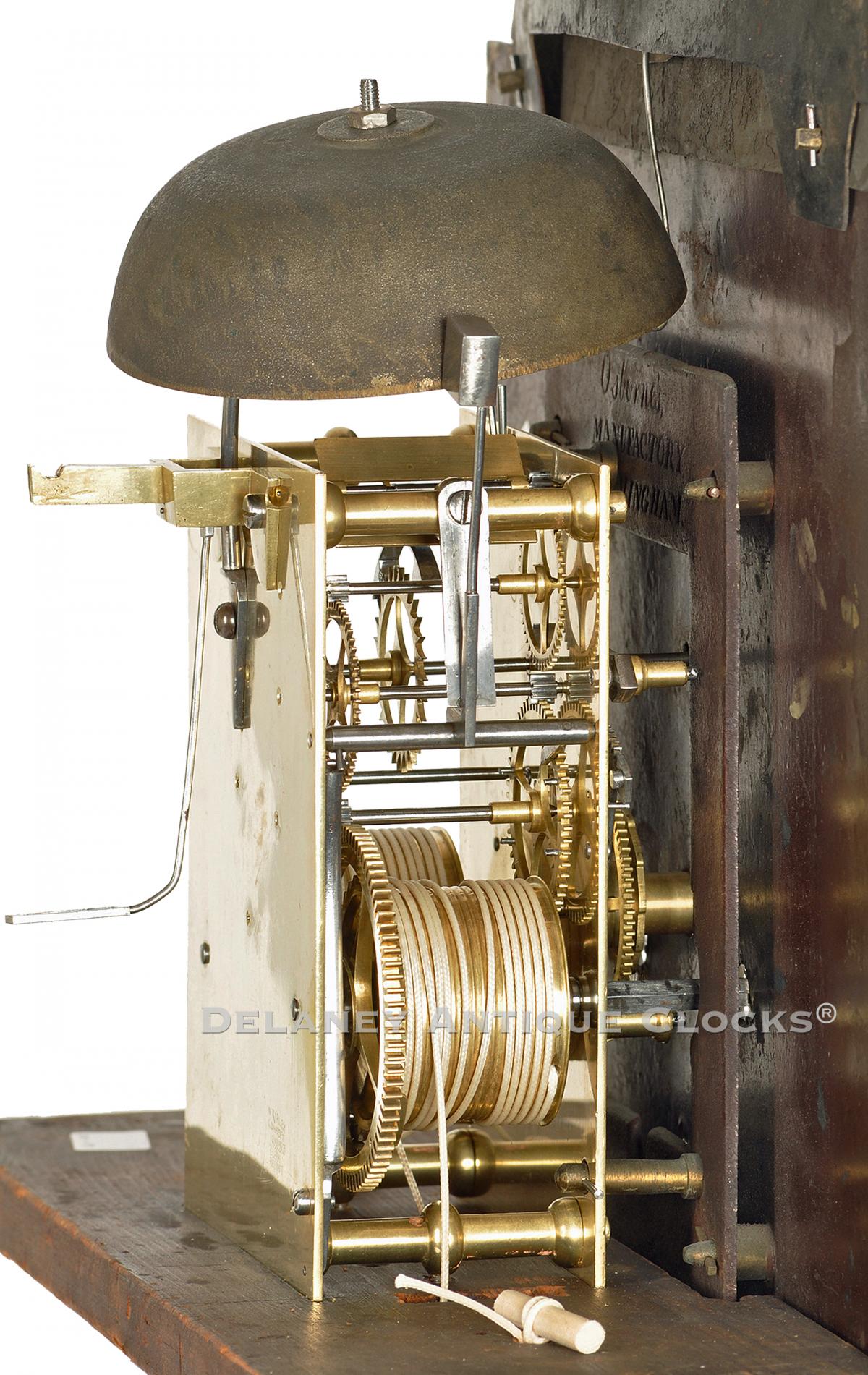Joshua Wilder of Hingham, Massachusetts. A mahogany case tall clock featuring a rocking ship dial. UU-100.
This is an excellent example of a rocking ship tall clock made by Joshua Wilder of Hingham, Massachusetts.
This federal case features excellent proportions, richly grained mahogany, and an older surface. This case is typically proportioned for this form and Wilder's South Shore working location. This example stands on applied French feet. These are nicely splayed and form a fancy center drop apron in the lower section of the base. The base section is cross-banded with a broad mahogany framing. The center panel is slightly inset and trimmed with simple molding. The waist is narrow and centers a rectangular door trimmed with applied molding or a cockbeaded edge. This waist door features an outstanding crotch veneer. The sides of the case are fitted with finely reeded quarter columns. These terminate in turned wooden quarter capitals. The hood or bonnet is fitted with a light, lacy, New England-style fretwork pattern. Three reeded finial plinths support the frets, and three brass ball and spiked finials. Fully turned and nicely shaped bonnet columns flank the door. The bonnet or hood door is veneered in figured mahogany. This door is fitted with glass to protect the painted iron dial.
This iron dial was painted by the ornamental artist Spencer Nolen in Boston. It is signed in script, "Joshua Wilder." The place location of "HINGHAM" is painted in block lettering. The time track features a closed minute ring, and the hours are marked with large Roman hour numerals. The quarter hours are indicated in an Arabic format. A single gold band frames the perimeter of the time ring. Nicely shaped steel hands indicate the time. Each of the four spandrels areas is decorated with colorful conch shells. The automated feature of a rocking ship is located in the arch of this dial. The painted ship is depicted flying two large American flags. This ship actually moves or rocks gently from side to side with the motion of the pendulum. The painted scene behind the sailing ship includes a large meetinghouse built on a peninsula to the right. This nautical theme is painted on a convex piece of metal which adds to the visual depth of the scene. This is nicely executed.
The movement is constructed in brass and is of good quality. They are a time-and-strike design that will run for eight days on a full wind. It is wound with a crank key and powered by two drive weights. The strike train operates a rack and snail design, the common setup for New England clocks of this period. The brass-faced pendulum bob is fitted to a steel rod that hangs from the back of the movement.
This clock stands approximately 94 inches tall to the top of the center finial and was made circa 1815.
Inventory number UU-100.
Joshua Wilder was born in Hingham, Massachusetts, on December 2, 1786. He was trained in the art of clockmaking by John Bailey Jr. of Hanover, MA. Wilder completed this apprenticeship sometime around 1807. It appears he stayed in Hanover briefly before moving back to Hingham to establish his home and business on Main Street in the South Parish. Wilder was the first clockmaker to settle in this prosperous town. He found a ready market for tall case clocks, dwarf clocks, wall timepieces, the Massachusetts shelf form, and mirror clocks. Wilder becomes one of America’s most prolific Makers of the dwarf clock form.
Joshua Wilder was active in the local religious Society of Friends. He became known locally as the “Old Quaker Joshua Wilder.” He was also involved with the Temperance Society and Peace Society of Hingham. Wilder’s business eventually evolves into a retailer of common goods. Wilder is said to have trained several Clockmakers, including his son Ezra Wilder, Reuben Tower, Allen Kelley, and Phillip Bennet. About 1840, it is said that his son Ezra joined him in business. Joshua died on October 4, 1860, in the town of Scituate.
A fair number of clocks made by this maker have been found. Many of these are the dwarf form but also include tall case clocks, timepieces, shelf clocks, and mirror clocks in much smaller numbers. Currently, the Hingham Library is displaying a tall case clock he made.



